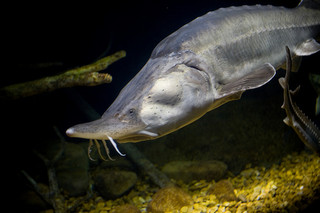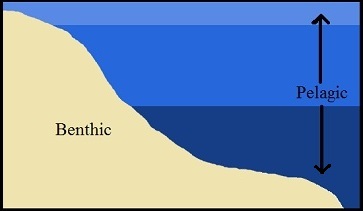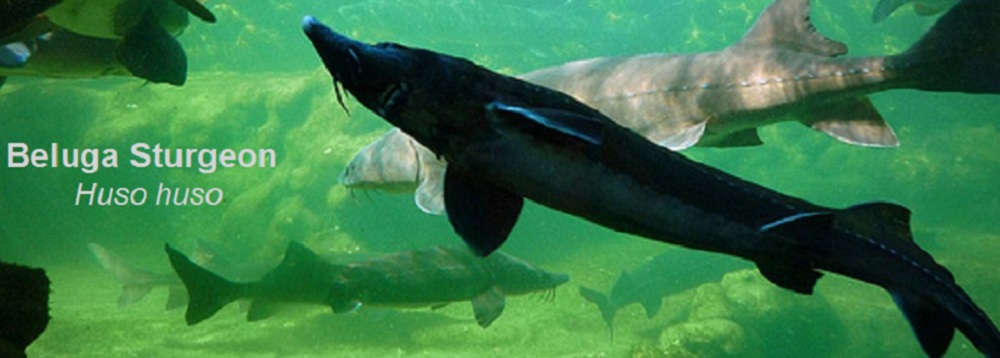Habitat
 Huso huso
is one of the great sturgeon species found in the Northern
Hemisphere. More specifically, this primitive fish species is native
to the Danube basin of the Black Sea and the Ural basin of the Caspian Sea. Sightings and captures
of Huso huso have been reported in the Adriatic and Azov
Seas though they are few. Stocked beluga sturgeon can be found in
the Volga River as a result of population rehabilitation efforts. (Kottelat,
2011)
Huso huso
is one of the great sturgeon species found in the Northern
Hemisphere. More specifically, this primitive fish species is native
to the Danube basin of the Black Sea and the Ural basin of the Caspian Sea. Sightings and captures
of Huso huso have been reported in the Adriatic and Azov
Seas though they are few. Stocked beluga sturgeon can be found in
the Volga River as a result of population rehabilitation efforts. (Kottelat,
2011)
The beluga sturgeon spends the majority of its
lifecycle in saltwater seas but makes its way up river during
spawning seasons, making Huso huso an anadromous species. (Dadswell,
1987)
Huso huso spawns in the main, center portion of large, deep
rivers with a gravel, pebble, or stone bottom. (Hudson,
2003) To learn more about
the reproduction habits of the beluga sturgeon, go the
reproduction page!
 Within the Caspian and Black Seas, the beluga
sturgeon is found in the pelagic, or open water, zone. Huso huso
tends to stay in this zone in order to follow its many prey sources.
(Kottelat, 2011) The sturgeon are found
swimming throughout the entire water column though there is
generally more sturgeon swimming closer to the substrate. The fish
stay at these lower levels to follow their numerous prey sources. (Hudson,
2003)
To learn more about the prey sources and nutrition of Huso huso,
explore the Nutrition page.
Within the Caspian and Black Seas, the beluga
sturgeon is found in the pelagic, or open water, zone. Huso huso
tends to stay in this zone in order to follow its many prey sources.
(Kottelat, 2011) The sturgeon are found
swimming throughout the entire water column though there is
generally more sturgeon swimming closer to the substrate. The fish
stay at these lower levels to follow their numerous prey sources. (Hudson,
2003)
To learn more about the prey sources and nutrition of Huso huso,
explore the Nutrition page.
To go back to the homepage,
click here.
